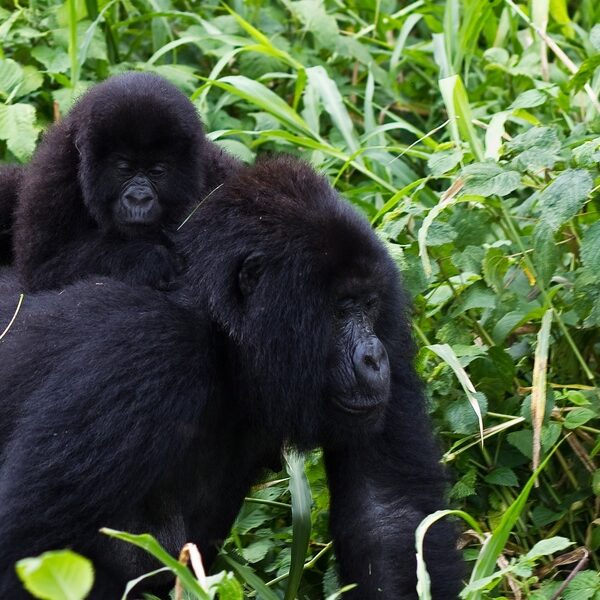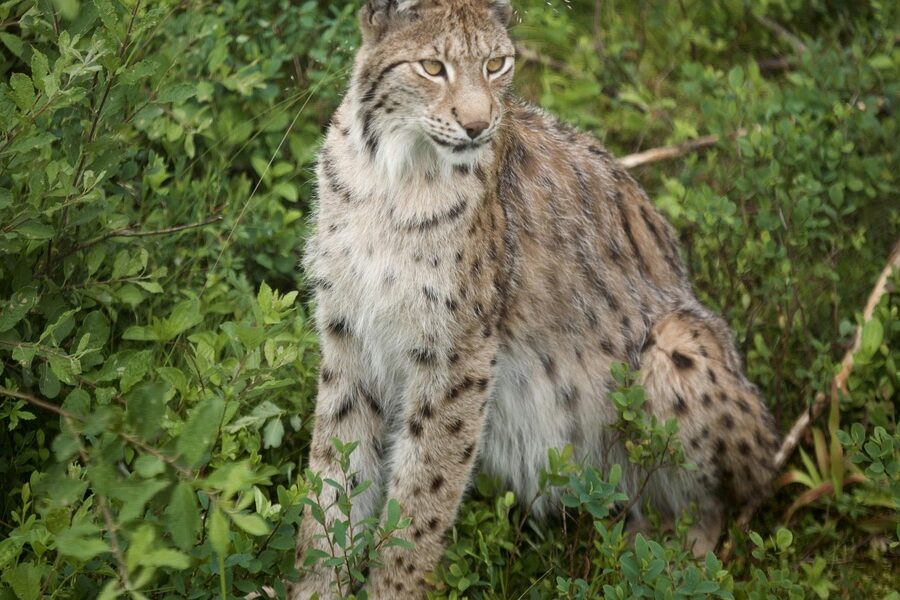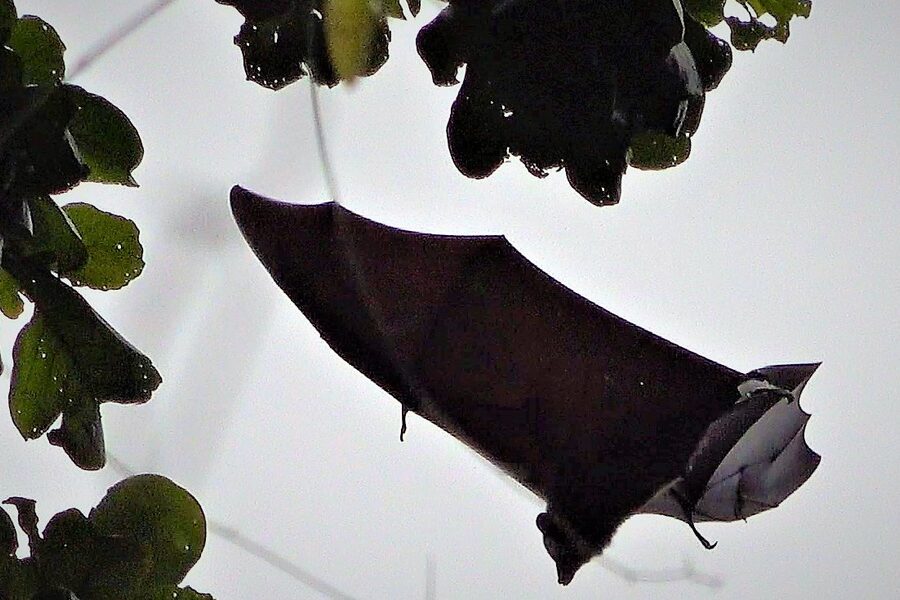Libya’s varied landscapes — from Mediterranean coastlines and steppe to desert oases and irrigated farms — host a mix of native and introduced species. Human trade, shipping and landscape changes have created pathways for non-native plants and animals to establish and sometimes spread rapidly, affecting agriculture, water resources and native habitats.
There are 15 Invasive Species in Libya, ranging from Black rat to River red gum. For each species you’ll find below the Scientific name, Origin and pathway, and Libya distribution to make comparisons and follow up on sources and management notes; you’ll find detailed entries below.
How do invasive species like the Black rat and River red gum affect Libya’s ecosystems?
Black rats can damage crops, stored food and native bird populations through predation and competition, while River red gum alters water use and riparian habitats where it establishes; together these impacts can reduce biodiversity, change fire regimes and strain water resources, especially near agriculture and settlements.
What practical steps can communities take to reduce spread and impacts?
Local actions—improving biosecurity at ports and farms, removing or controlling established infestations, reporting sightings to authorities, and using native species in restoration—are effective first steps; coordinated monitoring and public awareness help prioritize control where it will do the most ecological and economic good.
Invasive Species in Libya
| Name | Scientific name | Origin and pathway | Libya distribution |
|---|---|---|---|
| House mouse | Mus musculus | Eurasia; stowaway with humans | Urban, farms, ports, nationwide |
| Black rat | Rattus rattus | South/SE Asia; ship/commerce introductions | Ports, coastal towns, urban areas |
| Brown rat | Rattus norvegicus | Northeast Asia; ballast/commerce introductions | Harbors, sewer systems, cities |
| Feral cat | Felis catus | Domesticated worldwide; abandoned/feral escapees | Urban, rural, oases, coasts |
| Feral dog | Canis familiaris | Domesticated worldwide; abandoned/feral escapees | Villages, outskirts, oases |
| Prickly pear | Opuntia ficus-indica | Mexico; introduced for fodder/orchard hedges | Oases, coastal scrub, disturbed land |
| Mesquite | Prosopis juliflora | South America; afforestation/fodder plantings | Oases, arid fringes, disturbed sites |
| River red gum | Eucalyptus camaldulensis | Australia; planted for forestry/windbreaks | Oases, irrigated plantations, coastal areas |
| Peruvian pepper | Schinus molle | South America; ornamental/roadside plantings | Urban gardens, roadside, oases |
| Red palm weevil | Rhynchophorus ferrugineus | SE Asia; trade and plant movement | Date palm groves, urban palms, oases |
| Caulerpa (invasive strain) | Caulerpa taxifolia | Indo-Pacific; aquarium release/ship vectors | Mediterranean coast, shallow rocky/sandy seabeds |
| Comb jelly | Mnemiopsis leidyi | Western Atlantic; ballast-water introduction | Coastal waters, harbors |
| Goldspotted rabbitfish | Siganus luridus | Red Sea; Lessepsian migration via Suez | Eastern Mediterranean coast, reportedly off Libya |
| Marbled spinefoot | Siganus rivulatus | Red Sea; Lessepsian migration via Suez | Coastal waters, reefs, bays |
| Mediterranean fruit fly | Ceratitis capitata | Sub-Saharan Africa; trade/fruit movement | Agricultural areas, orchards nationwide |
Images and Descriptions
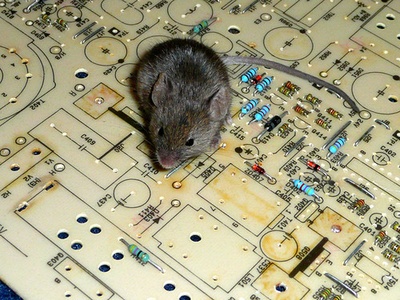
House mouse
Small, adaptable rodent common around buildings and grain stores. Causes crop and food losses, spreads disease and complicates pest control; widely established and managed mainly by trapping and rodenticides in urban and agricultural areas.

Black rat
Climbing rodent often in ships, warehouses, and old buildings. Damages stored food, transmits disease and preys on native birds; long-established in Libyan ports and targeted in quarantine and local control programs.
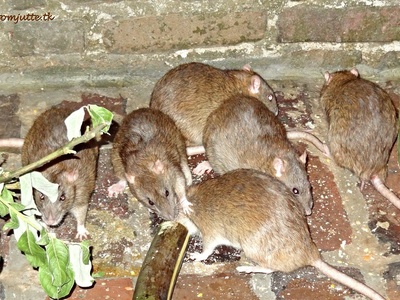
Brown rat
Heavier ground-dwelling rat that damages infrastructure, food supplies and can transmit pathogens. Widespread in towns and ports with routine control efforts but persistent populations in urban waste systems.

Feral cat
Domestic cats gone wild, efficient predators of birds, reptiles and small mammals. Contribute to native species declines and zoonotic risk; common across Libya with limited organized feral-cat management.

Feral dog
Free-roaming dogs scavenge, harass livestock and wildlife, pose rabies and bite risks. Widespread in rural and peri-urban Libya; control focused on vaccination, sheltering and occasional culling campaigns.
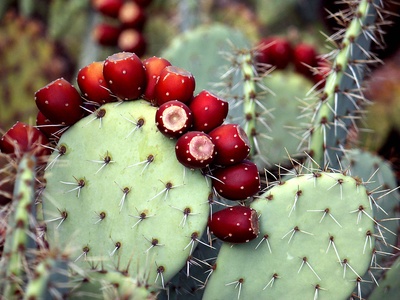
Prickly pear
Spiny cactus producing edible fruit; forms dense impenetrable thickets that displace native vegetation, hinder grazing and require mechanical or chemical removal. Naturalized across many Libyan oases and degraded lands.

Mesquite
Tough, fast-growing shrub/tree used for shade and fodder that forms dense stands, lowers groundwater, outcompetes natives and is hard to remove. Reported naturalized around some Libyan oases and roadside plantings.

River red gum
Tall, fast-growing tree widely planted for shade and fuelwood. Can alter water tables and fire regimes, occasionally naturalizes along watercourses; management focuses on site planning and removal where invasive.

Peruvian pepper
Evergreen ornamental tree with pink peppercorns; naturalizes in disturbed sites and competes with native flora. Seen in towns and oasis plantings; removed where it threatens native vegetation.

Red palm weevil
Large snout beetle that bores into palms, causing wilting and death. Major pest of economically vital date palms in Libya; monitored with pheromone traps and subject to quarantine and chemical controls.

Caulerpa (invasive strain)
Green seaweed that forms dense mats smothering native seagrass and altering fisheries habitat. Mediterranean invasive strain recorded along North African coasts and reported from Libyan waters; control is difficult, focusing on monitoring and local removal.
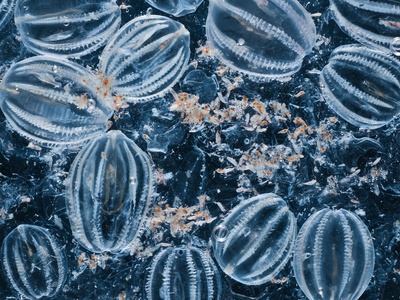
Comb jelly
Transparent voracious ctenophore that feeds on plankton and fish larvae, disrupting food webs and fisheries. Recorded in the Mediterranean and reported from nearby North African waters; monitored due to potential local ecological impacts.

Goldspotted rabbitfish
Herbivorous fish that grazes macroalgae and can shift reef communities toward turf algae. A Lessepsian migrant now established in parts of the Mediterranean and reported from Libyan coastal waters, altering local benthic habitats.

Marbled spinefoot
Robust rabbitfish that browses seagrass and algae, often forming dense populations that change habitat structure. Established in the Mediterranean and documented along North African coasts, including Libyan shores, with ecological impacts on seagrass beds.

Mediterranean fruit fly
Small tephritid fly attacking many fruit crops, causing direct losses and quarantine restrictions. Widely present in Libya, it is a major agricultural pest requiring monitoring, baiting and export controls.

